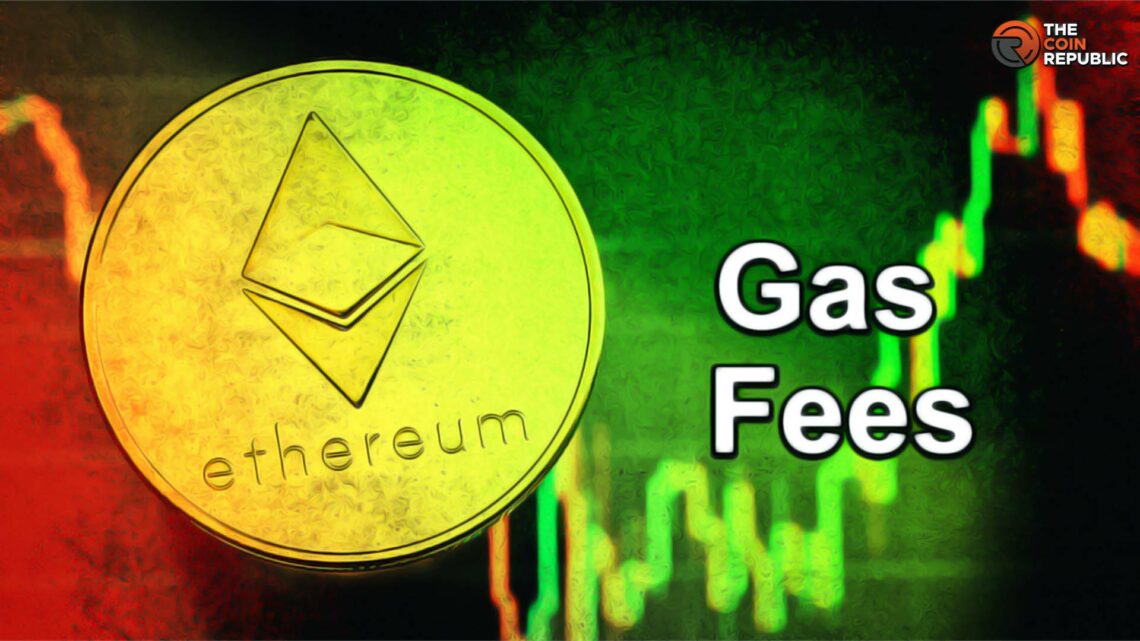- 1 Ethereum is one of the most widely-used cryptocurrencies but its gas fee bothers most users.
- 2 An insightful study might help users find ways to minimize gas fees.
Like vehicles, Ethereum also needs gas to work. But in the ETH context, it is not petrol, diesel, or any physical form of fuel. In simple words, Ether is the native cryptocurrency of Ethereum which keeps the network working. Its ETH gas fee is used to compensate Ethereum miners. They use it to verify the transactions and add a layer of security to the blockchain.
In addition, it makes the network expensive enough for malicious users to use. So, one can say that the gas fee keeps Ethereum perfectly functional. Even if that’s true, the gas fee is probably the most despised part of ETH for crypto users. The fact that gas fees can be inexplicably expensive bothers most people. So, let’s dive into some fascinating aspects of the Ethereum gas fee.
Here’s How Ethereum Gas Fee Is Calculated
To understand the concept as a whole, it’s important to know how they’re calculated. The ETH miners use a metric system to calculate it. The smallest unit in this system is called “wei” and 1 ETH is equal to 1 quintillion (18 zeros) wei. The gas fee is represented in gigawei(gwei) which is equal to 1 Billion wei.
When the average gas for a transaction is 100 gwei, users pay a base fee of 0.0000001 ETH. Those who regularly mint non-fungible tokens or buy them on a secondary market find it quite a reasonable deal. This is because the base fee is just one part of the total fee structure.
In Aug 2021, Ethereum’s London Upgrade changed the method of calculation. It is now calculated as:
Total Fee = Gas Unit (limits)*(Base fee+Tip)
Gas Units (limits): It is the maximum amount of gas one is ready to spend on a transaction. It should be noted that different types of transactions need different amounts of gas. So, experts advise users to calculate the gas unit rather carefully.
Base Fee: It is the minimum amount of gas needed to execute a transaction on the Ethereum network. The demand for a transaction determines the amount of gas needed for a base fee. The type of transaction doesn’t affect the fee in any way. As the determining factor is demand, the base fee changes based on the number of users.
Tips: Tips are additional fees paid for executing the transactions faster. They are also known as priority fees and provide economic incentives for Ethereum miners. Miners can see the transactions that have tips attached. Thus, they also make efforts to complete the transactions as early as possible.
It’s important to understand that irregularities in the calculation cause failure of transactions. The gas unit limit cannot be less than required. That’s because the miner has already set the limits and has received the fee for doing it too.
Let’s understand the total fee formula with an example. Ms. X wants to send 1 ETH to Mr. Y. The gas amount required is 23,000 gwei and she sets it as the gas limit. As per the base fee calculation, the minimum gas required is 150 gwei. However, Ms. X wants to expedite the transitions, so it adds a tip of 20 gwei.
Reason Behind Hiked Gas Fee
There are two key factors that determine the gas fee amount on Ethereum.
Gas fee denomination in gwei
ETH variable total fee formula
The cost of gas fee directly depends on the cost of ETH. Remember that the gas fee is denominated in gwei. While it streamlines the calculation, it’s not the default way of representing the ETH amount. The inclusion of base fees plays a pivotal role here as well.
With the growing number of DeFi and NFT sectors, the demand for ETH is growing. Therefore, the price of gas is also reflecting a surge. Besides that, Ethereum’s total fee formula also makes it grow. The base fee again becomes a major driver. It represents the minimum amount of gas and responds to the fluctuating demand.
Currently, more than 3000 decentralized applications are using Ethereum. These applications account for over 250,000 transactions a day. The increasing adaption of Ethereum results in higher base fees which eventually hikes the gas fee. Nonetheless, developers have tried to make gas fees more consistent.
They rolled out the EIP 1559 upgrade to make some changes in the calculation of the base fee. Evidently, it hasn’t made any significant impact. Although the developers continue to work on that front, another attempt toward it was Ethereum 2.0. The upgrade changed ETH’s consensus from Proof-of-Work (PoW) to Proof-of-Stake (PoS).
Upshot
No one knows when the Ethereum gas fee will get cheaper on Ethereum. In the meantime, users can try a few things to make ETH transactions cheaper. They can reduce the base fee and tip to bring down the overall cost. Furthermore, they can set a maximum limit on it. This would result in less gwei spent on transactions.
Finally, they can try Layer-2 scaling platforms. These platforms are designed to deliver cheaper and faster transactions. Hopefully, users can find some solace with these tricks while paying in Ethereum.

Nancy J. Allen is a crypto enthusiast, with a major in macroeconomics and minor in business statistics. She believes that cryptocurrencies inspire people to be their own banks, and step aside from traditional monetary exchange systems. She is also intrigued by blockchain technology and its functioning. She frequently researches, and posts content on the top altcoins, their theoretical working principles and technical price predictions.


 Home
Home News
News










